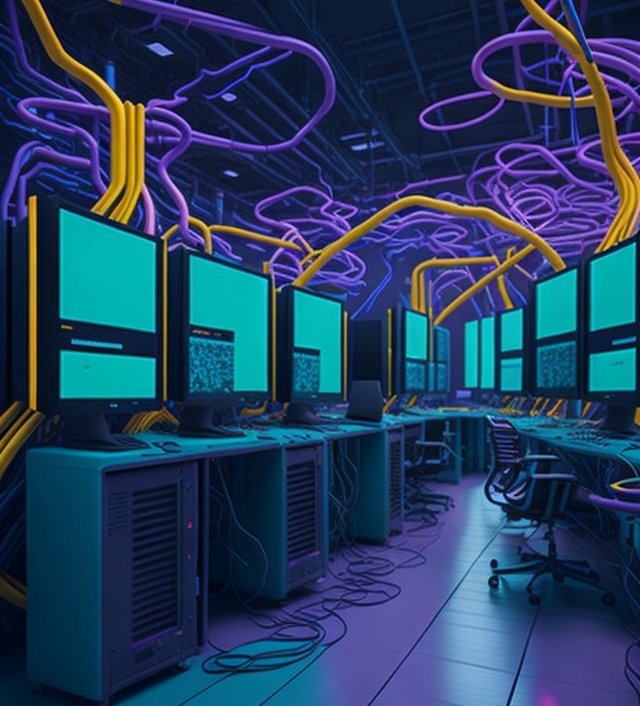PLAY
How Decentralized LLMs Work?
However, a new technology called decentralized LLMs is making it possible to run even the largest LLMs on any device. Decentralized LLMs divide the model into smaller parts that can be run on different devices. This allows the model to be trained and run much more efficiently, making it accessible to a wider range of users.
One of the most exciting things about decentralized LLMs is that they truly decentralize LLMs. This means that LLMs are no longer controlled by a small number of large organizations. Instead, they can be run by anyone with a device that can connect to the internet.
This has the potential to revolutionize the way we use LLMs. For example, it could allow anyone to develop their own LLMs or to use LLMs to power new applications. It could also make LLMs more accessible to people in developing countries.
Large language models (LLMs) are becoming increasingly powerful and versatile, but they can be computationally expensive to train and run. This has limited their availability to large organizations with access to powerful computing resources.
How Decentralized LLMs Work?
Decentralized LLMs work by dividing the model into smaller parts called shards. Each shard is a self-contained version of the model that can be run on a different device.
01.Requirements
02. Usage
When a user wants to use a decentralized LLM, they first need to connect to a decentralized LLM service. The service will then distribute the shards of the model to the user's device.
Sure, here is the blog post with the title changed to "Decentralized Large Language Models: The Future of LLMs":
Decentralized Large Language Models: The Future of LLMs
Large language models (LLMs) are becoming increasingly powerful and versatile, but they can be computationally expensive to train and run. This has limited their availability to large organizations with access to powerful computing resources.
However, a new technology called decentralized LLMs is making it possible to run even the largest LLMs on any device. Decentralized LLMs divide the model into smaller parts that can be run on different devices. This allows the model to be trained and run much more efficiently, making it accessible to a wider range of users.
One of the most exciting things about decentralized LLMs is that they truly decentralize LLMs. This means that LLMs are no longer controlled by a small number of large organizations. Instead, they can be run by anyone with a device that can connect to the internet.
This has the potential to revolutionize the way we use LLMs. For example, it could allow anyone to develop their own LLMs or to use LLMs to power new applications. It could also make LLMs more accessible to people in developing countries.
How Decentralized LLMs Work
Decentralized LLMs work by dividing the model into smaller parts called shards. Each shard is a self-contained version of the model that can be run on a different device.
When a user wants to use a decentralized LLM, they first need to connect to a decentralized LLM service. The service will then distribute the shards of the model to the user's device.
Once the shards are on the user's device, they can be used to run the model. The user can then interact with the model as they would with any other LLM.
Benefits of Decentralized LLMs
There are several benefits to using decentralized LLMs. These include:
- Reduced cost: Decentralized LLMs can be run on any device, which means that there is no need to purchase expensive computing resources.
- Increased scalability: Decentralized LLMs can be scaled up to handle more requests, which makes them ideal for high-traffic applications.
- Improved performance: Decentralized LLMs can run more efficiently than traditional LLMs, which means that they can provide better performance.
- Decentralization: Decentralized LLMs are not controlled by a single organization, which makes them more secure and reliable.
The Future of Decentralized LLMs
Decentralized LLMs are still in their early stages of development, but they have the potential to revolutionize the way we use LLMs. In the future, decentralized LLMs could be used to power a wide range of applications, including:
- Natural language processing: Decentralized LLMs could be used to develop new natural language processing applications, such as chatbots and machine translation.
- Artificial intelligence: Decentralized LLMs could be used to develop new artificial intelligence applications, such as self-driving cars and medical diagnosis.
- Education: Decentralized LLMs could be used to develop new educational applications, such as personalized learning and virtual tutors.
The possibilities are endless. Decentralized LLMs have the potential to change the world, and we are only just beginning to see what they can do.
Conclusion
Decentralized LLMs are a new and exciting technology that has the potential to revolutionize the way we use LLMs. They are more accessible, scalable, and efficient than traditional LLMs, and they are not controlled by a single organization.
The future of decentralized LLMs is bright, and we can expect to see them used in a wide range of applications in the years to come.
Providing assistance
The web assistant should be able to provide quick and effective solutions to the user's queries, and help them navigate the website with ease.
Personalization
The Web assistant is more then able to personalize the user's experience by understanding their preferences and behavior on the website.
Troubleshooting
The Web assistant can help users troubleshoot technical issues, such as broken links, page errors, and other technical glitches.
Please log in to gain access on Decentralized Large Language Models: The Future of LLMs file .
